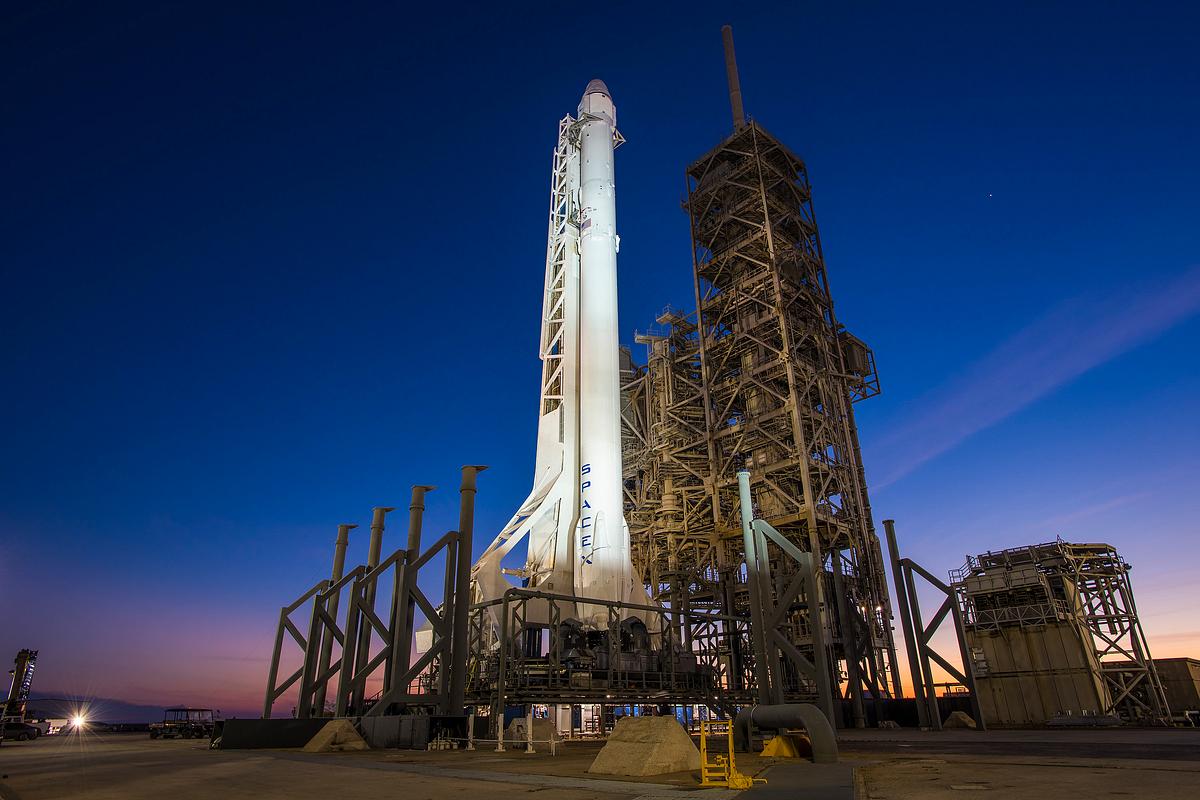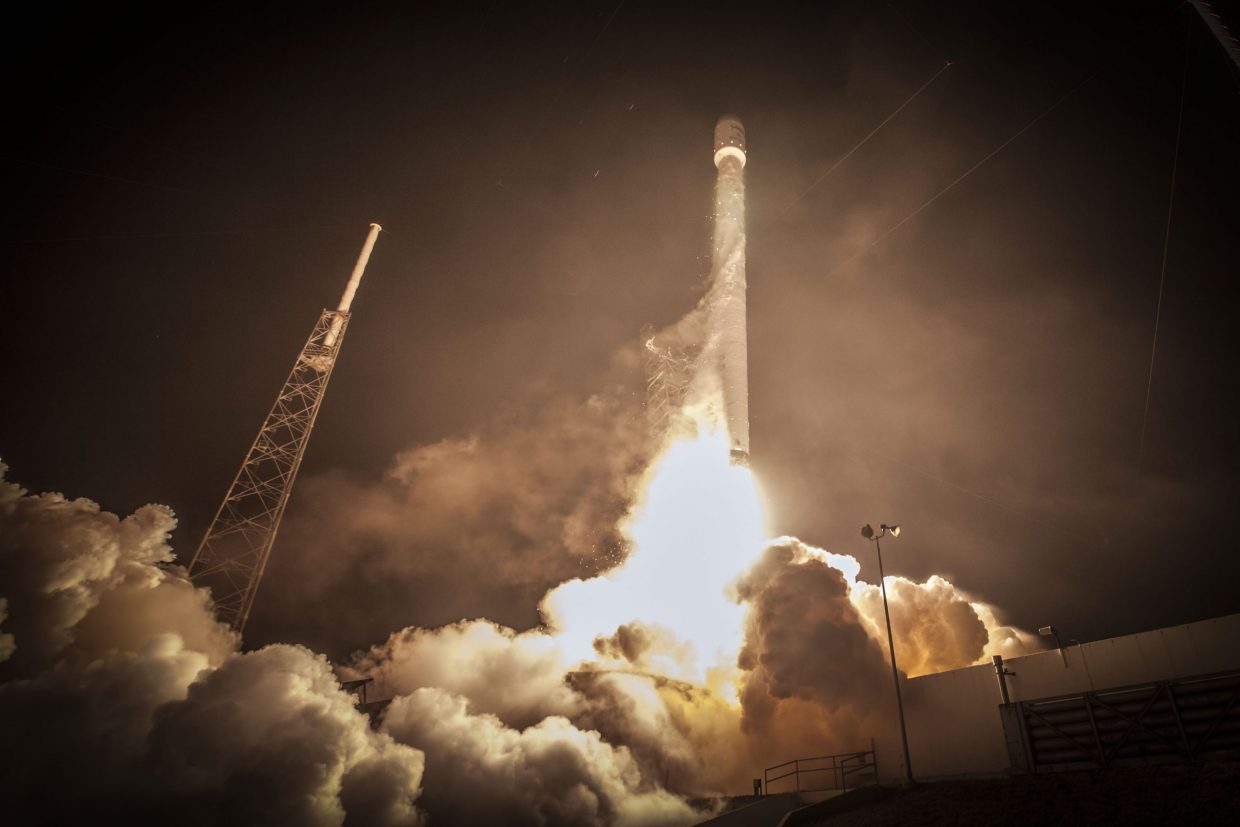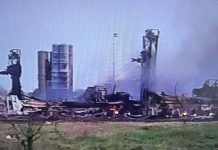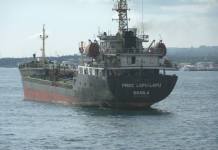For the past seven years, a chunk of an old SpaceX Falcon 9 rocket has been circling the Earth in an extremely wide orbit. And this large piece of space junk is likely to slam into the moon’s far side, causing a blazing explosion.
China Starts Training Its Combat Drones To Dogfight Fighter Jets; Claims Technology 1000 Times Faster Than The US
It’s not the first time that a human-made item would collide with the moon. US space agency NASA has already sent rocket pieces and spacecraft careening into the lunar mud. However, the Falcon 9 debris could be the first unintentional dive-bomb on the moon as it wasn’t supposed to be there in the first place.

Humans, however, did conceive a plan to nuke the moon at some point in history. In the 1950s, the space race between the Soviet Union and the United States reached dizzying heights, with both governments investing heavily in the sector.
Sputnik 1 was the first artificial satellite to enter orbit around the Earth and was launched by the Soviet Union in October 1957. Along with the Soviets’ limitless scientific gains, the mission’s surprising success provoked considerable concern in the West.
During the Cold War, such public sentiments in the US played a crucial role in the space race, which pitted the two countries against each other for superiority in spaceflight capabilities. The US then wanted to demonstrate its capability to compete with the USSR, so it decided to nuke the moon.
Project A119
Project A119, also known as “A Study of Lunar Research Flights”, was a plan to detonate a nuclear bomb on the surface of the moon. The project’s proponents anticipated it would frighten the Soviets and would establish America’s dominance in space. Furthermore, the effort was intended to facilitate the United States in improving its domestic image.
The grandiose idea was picked because the nuclear flash would have been noticeable to anyone from the Earth. American officials were particularly concerned with the blast’s accuracy, as the Air Force intended the entire event to be viewed by everyone on Earth.
Keeping this in mind, they decided to nuke the visible portion of the moon in order to enable people to witness the cloud caused by the explosion.
Initially, the scientists suggested employing a hydrogen bomb. However, the weapon’s weight proved to be challenging for the rocket to lift and finally launch it into orbit. As a backup, the scientists opted to detonate a W25 warhead, a compact, lightweight, and destructive bomb.
The W25 had a yield of 1.7 kilotons, which was about 12 kilotons less than the Hiroshima atomic bomb. Experts expected that even with the lesser kiloton yield, there would be enough force to form a dust cloud visible from Earth.
However, the project was canceled by the Air Force in January 1959 over fears of a public backlash and the radiation risk. Leonard Reiffel, the project head for A1119, claimed that nuking the moon could result in other problems, such as radioactive fallout, which could preclude further exploration and settlement of the moon.

Reiffel stated that launching a precision strike on the moon with an intercontinental ballistic missile would have been simpler, implying hitting the target within a permitted boundary of around 2 miles. This would have made the explosion noticeable from Earth (assuming it had detonated on the surface rather than in a lunar crater) and had the desired effect on the US’ adversaries.
Reports emerged in 2010, about 60 years after the project’s cancellation, claiming the Soviets had a plan similar to Project A119 under the code name ‘E’. Project E-1 was to visit the lunar surface, while E-2 and E-3 were to picture the far side of the moon, and E-4 was to be a nuclear strike to demonstrate Soviet dominance in space.
SpaceX Falcon 9 Rocket
As previously mentioned, SpaceX rocket junk is on its way to collide with the moon. In February 2015, the booster was launched from Florida as part of an interplanetary mission to deploy a space weather satellite on a million-mile journey.

At this stage it was high enough that it did not have enough fuel to return to Earth’s atmosphere but also “lacked the energy to escape the gravity of the Earth-Moon system”, meteorologist Eric Berger explained in a recent post on Ars Technica. “So it has been following a somewhat chaotic orbit since February 2015,” Berger added.
For starters that's a Crew Dragon launching on the left not a science mission; and on the right the Falcon 9 rocket's second stage, which has no fuel mind you, is burning hard toward the Moon, which does not have an atmosphere but is nonetheless producing some kind of shock wave.
— Eric Berger (@SciGuySpace) January 26, 2022
Bill Gray, an amateur astronomer and software developer in Maine, was the first to notice the terminal trajectory. Gray worked with observatories throughout the world to acquire more data. “With all the data, we’ve got a certain impact on March 4 at 12:25:58 Universal Time (4:25 a.m. PT),” Gray writes in a blog post. Jonathan McDowell, a leading watcher of orbit and everything near the Earth, confirmed the prediction.
Gray estimates that the spent rocket will crash into a lunar crater named Hertzsprung, which is about a bit larger than the size of the state of Iowa. The impact is far enough away that it will have no effect on the Apollo mission or other space program landing sites.
For those asking: yes, an old Falcon 9 second stage left in high orbit in 2015 is going to hit the moon on March 4. It's interesting, but not a big deal.
— Jonathan McDowell (@planet4589) January 25, 2022
This won’t be the first time a spacecraft has slammed into the moon. NASA, for example, crashed the rocket booster stages (the S-IVBs) into the moon for scientific purposes during many of the Apollo missions. It enabled them to collect seismic data to aid in the characterization of the lunar interior.
Not long ago, NASA crashed the Lunar Crater Observation and Sensing Satellite (Lcross) into the surface in search of water in 2009. Intentional collisions with the moon or other planets in our solar system are also advantageous since they clear the space of trash.
- Contact the author at ashishmichel@gmail.com
- Follow EurAsian Times on Google News





